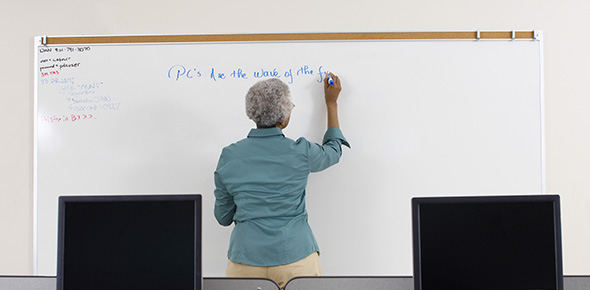Related Flashcards
Cards In This Set
| Front | Back |
|
Chapter 3.
What are neurons?
|
Neurons are conducting cells of the nervous system.
|
|
Define:
Soma (Cell Body) Dendrites Axon |
Soma: Contains genetic information to determine cell function
Dendrites: Receives messages from other neurons Axon: Conduct electrical impulses |
|
What are the functions of a glial cell?
|
Support, nourish, protect
Surrounds cells to protect them
Manufacture nutrients that neurons need Absorb toxins and waste materials |
|
What is the resting potential and neutrons and the ions on the outside and inside?
|
-70 millivolts
outside: Na+ (Sodium) inside: Ka+ (Potassium) |
|
What are graded potentials?
|
Changes which are proportional to stimulation.
|
|
What is the "All or None" Law?
|
Action potential not proportional. Fires with maximum intensity or none at all.
|
|
What stimulates the dendrite?
|
The axon.
|
|
What happens during depolarization?
|
Ion channels open and allows Sodium to flow in.
|
|
What happens with the action potential?
|
Depolarization reaches -55 millivolts.
Fires according to the all or none law. |
|
What is the Myelin Sheath and its purpose?
|
Fatty insulin layer derived from the glial cells. It increases the rate of transmission signals and protects the axon from electrical activity.
|
|
What are the Nodes of Ranvier and their purpose?
|
They are gaps in the myelin sheath and it signals jump from one gap to another.
|
|
What is multiple sclerosis?
|
When the immune system attacks the myelin sheath.
|
|
How do Neurons communicate?
|
By synaptic transmissions. They do not physically contact. They use chemicals.
|
|
What is the synaptic cleft?
|
The gap between the axon terminal and dendrite
|
|
What do excitatory neurotransmitters do?
|
Depolarize neuron. Stimulates flow of sodium. Increases likelihood of action potential.
|







